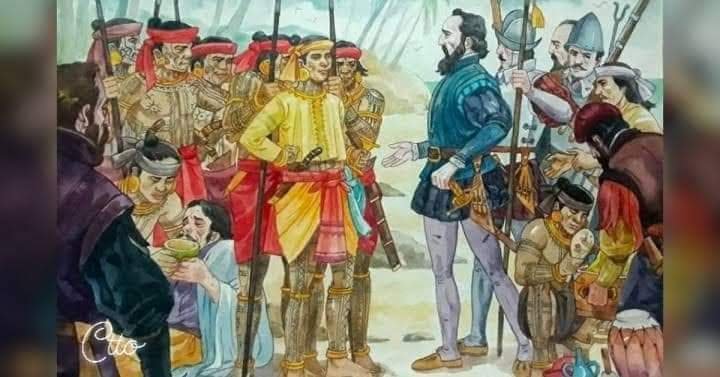#history
Magellan the Voyager.
For hundreds of centuries the various regions of the world remained isolated and the people believed that the Earth is round.
It was adventurous voyagers like Magellan, Columbus and Vasco da Gama who dared death and traversed the treacherous seas, discovering new lands and people and discovered that the Earth is round.
Ferdinand Magellan of Spain was a pioneering voyager who set out to prove that Earth is not flat by circumnavigating the world by traveling westward to get to the East.
After crossing the Pacific Ocean, a name coined by Magellan for its tranquil waters, the expedition team sighted the highest peak on Samar Island in the Philippines, on March 16, 1521.
On Magellan’s orders, the crew waited until the following day before landing on the beach of Homonhon, an uninhabited island.
When they landed on Homonhon, Magellan’s crew was detected by Rajah Humabon, the chief of a nearby island called Limasawa. Humabon sent scouts to Homonhon to investigate.
Pigafetta details how the Filipino natives approached their beach settlement from a boat.
“We saw a boat coming toward us with nine men in it. Therefore, the captain-general (Magellan) ordered that no one should move or say a word without his permission. When those men reached the shore, their chief went immediately to the captain-general, giving signs of joy because of our arrival.”
Magellan presented the natives with mirrors, bells, red caps, combs, and ivory. In exchange, the natives offered the foreigners fish, wine, and bananas, which the Spaniards mistook for figs.
“When those men reached the shore, their chief went immediately to the captain-general, giving signs of joy because of our arrival,” wrote Pigafetta.
The captain-general seeing that they were reasonable men, ordered food to be set before them, and gave them red caps, mirrors, combs, bells, ivory, bocasine, and other things.
When they saw the captain’s courtesy, they presented fish, a jar of palm wine, which they call uraca (alak), figs more than one palm long.”
“They had nothing else then, but made us signs with their hands that they would bring umay or rice, and coconuts and many other articles of food within four days,”
details Pigafetta.




